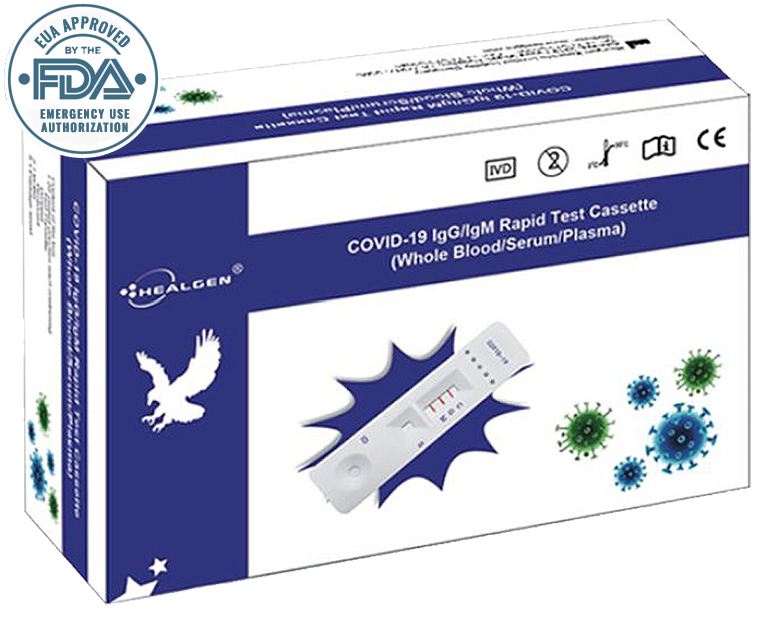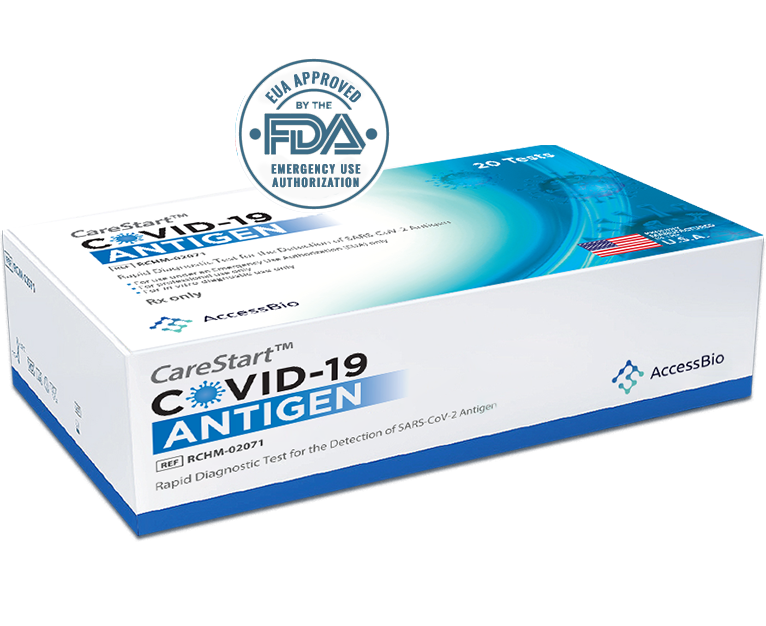About COVID-19 Testing
There are three different types of tests – molecular, antigen and antibody tests. The most common molecular test is the polymerase chain reaction (PCR) test. Molecular and antigen tests are both considered to be diagnostic tests.
A PCR or antigen test is used to identify an active coronavirus infection. PCR tests detect the COVID-19 virus’ genetic material. The antigen test detects proteins on the surface of the virus.
The antibody tests looks for antibodies that are made by a person’s immune system in response to a COVID-19 infection. According to the FDA, antibodies most commonly become detectable 1–3 weeks after symptom onset, at which time evidence suggests that infectiousness likely is greatly decreased and that some degree of immunity from future infection has developed. Antibody tests are commonly used to determine if the test subject has previously had a COVID-19 infection.
The table below summarizes the primary types of COVID-19 tests.
Source: Inspire Diagnostics
Coronavirus Tests
| Molecular Test | Antigen Test | Antibody Test | |
|---|---|---|---|
| Also known as: | Diagnostic test, viral test, molecular test, nucleic acid amplification test (NAAT), RT-PCR test, LAMP test | Rapid diagnostic test (some molecular tests are also rapid tests) | Serological test, serology, blood test, serology test |
| How the sample is taken: |
Nasal or throat swab (most tests)
Saliva (a few tests) |
Nasal or throat swab
Saliva (from Inspire Health |
Finger stick or blood draw |
| How long it takes to get results: | Same day (some locations) or up to a week |
One hour or less
Approximately 15 minutes |
Sam day (many locations) or 1-3 days
Approximately 15 minutes |
| Is another test needed: | This test is typically highly accurate and usually does not need to be repeated. | Positive results are usually highly accurate, but negative results may need to be confirmed with a molecular test. | Sometimes a second antibody test is needed for accurate results. |
| What it shows: | Diagnoses active coronavirus infection | Diagnoses active coronavirus infection | Shows if you’ve been infected by coronavirus in the past |
| What it can do: | Show if you ever had COVID-19 or were infection with the coronavirus in the past. | Definitely rule out active coronavirus infection. Antigen tests are more likely to miss an active coronavirus infection compared to a molecular tests. Your health care provider may order a molecular test if your antigen test shows a negative result but you have symptoms of COVID-19 | Diagnose active coronavirus invection at the time of the test or show that you do not have COVID-19 |
Source: Coronavirus Testing Basics, CDC, July 2020
How tests are administered
Rapid, Point-of–Care
Rapid, point-of-care tests use a mucus sample from the nose or throat, but can be analyzed at the doctor’s office or clinic where the sample is collected and results may be available in minutes. These may be molecular or antigen tests.
At-Home Collection
At-home collection tests, available only by prescription from a doctor, allow the patient to collect the sample at home and send it directly to the lab for analysis.
Saliva Tests
Saliva tests allow a patient to spit into a tube rather than get their nose or throat swabbed. Saliva tests may be more comfortable for some people and may be safer for health care workers who can be farther away during the sample collection.
Source: Coronavirus Testing Basics, CDC, July 2020
What is the difference between a PCR test and an antigen test since they both test for the COVID-19 virus?
Rapid antigen tests are commonly used in the diagnosis of respiratory pathogens including influenza viruses. Rapid antigen tests perform best when the person is tested in the early stages of infection with SARS-CoV-2 when viral load is generally highest. The FDA cites rapid antigen tests can be used for screening testing in settings in which repeat testing could quickly identify persons with SARS-CoV-2 infection to inform infection prevention and control measures, thus preventing transmission. Further, in such setting, immediate results with antigen tests can be more valuable even though they may have lower sensitivity than PCR tests, especially when rapid turnaround time is required.
The table below highlights some key points of differentiation between PCR and antigen tests.
Summary of Some Differences between RT-PCR Tests and Antigen Tests
| RT-PCR Tests | Antigen Tests | |
|---|---|---|
| Intended Use | Detect Current Infection | Detect Current Infection |
| Analyte Detected | Viral RNA | Viral Antigens |
| Specimen Type(s) | Nasal Swab, Sputum, Saliva | Nasal Swab |
| Sensitivity | High | Moderate |
| Specificity | High | High |
| Test Complexity | Varies | Relatively Easy to Use |
| Authorized for Use at the Point-of-Care | Most devices are not, some devices are | Yes |
| Turnaround Time | Ranges from 15 minutes to > 2 days | Approximately 15 Minutes |
| Cost/Test | Moderate | Low |
Source: Interim Guidance for Rapid Antigen Testing for SARS-CoV2, September 4, 2020

